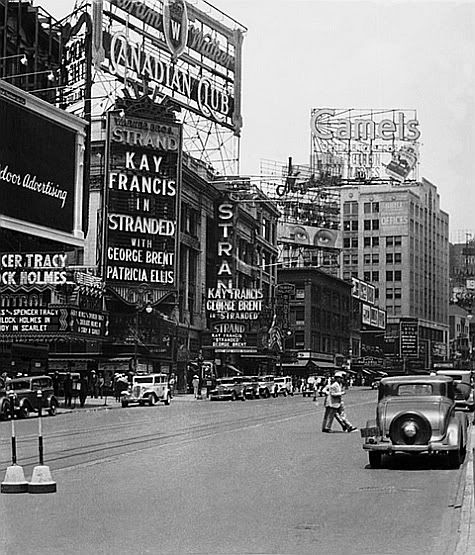His Streets, His Stories, His Life
Lemon Andersen says the word “drive” as if it were holy. Of course he doesn’t mean it in the sense of what people do in cars or on golf courses. “Drive,” a noun that stuck and grew in Mr. Andersen’s mind when he heard it uttered by a demanding teacher in a children’s ballet class, means ambition, discipline and ruling passion. It is a force powerful enough to propel a teenage crack dealer from poverty in Brooklyn to a solo spotlight on a stage at the Public Theater.
That’s where “County of Kings,” Mr. Andersen’s gleaming stand-up memoir, opened on Monday night. Seen in an earlier version at the Public as part of the Under the Radar Festival in January, this one-man show has since acquired a formidable team of producers, including the filmmaker Spike Lee, and a seriously enhanced focus, precision and polish. For Mr. Andersen, drive has clearly been a god worth serving.
Directed and developed by Elise Thoron, “County of Kings” is in its outlines a conventional show-biz fable, not unlike the “Fame” movies, in which eager kids from hard-knock backgrounds “learn how to fly” on the wings of talent. But Mr. Andersen invests the formula with a fine-grained grittiness of detail and a rapt love for words that is at least as strong as his love of hearing his own voice.
Both kinds of love are essential to his craft, and they endow Mr. Andersen with a magnetism that holds us for the nearly two hours it takes him to tell his story. “County of Kings” begins with a moment of apotheosis, at the Tony Awards in 2003, when “Russell Simmons Def Poetry Jam,” a show in which Mr. Andersen appeared, won for “special theatrical event.” From the heights of that evening, the show’s focus glides, like an old-fashioned biopic, down Manhattan, over the Hudson River and into a Brooklyn housing complex called the Courtyard.
“These are my streets, my stories,” says Mr. Andersen, admiring the retrospective view in wonder. “How did I end up here?”
“County of Kings” maps the road from there to here in a series of set pieces rendered in prose and poetry, propelled by a hip-hop urgency that becomes the beat of Mr. Andersen’s life. Undulating, chanting and contorting his deceptively guileless face to become both the child he was and the people who shaped him, he describes the exhilaration and the pain of growing up in a drug-scarred but familial neighborhood, the son of a Puerto Rican mother and a Swedish-American father.
His memories of boyish pleasures, garlanded with cadenced recitations of brand names and headlines that define a culture, include watching his stepfather strip cars and watching the crowds watch his younger self as he spontaneously dances with his beloved mother, Millie, at Coney Island. The agonies, etched in a wounded ambivalence, include seeing Millie, a drug addict, die of AIDS in a hospital. (His recitation of contrasting litanies about what life will be like after Millie — couched in terms of “only one more” and “no more” — is the show’s most quietly potent moment.)
Mr. Andersen speaks of going on to sell the kind of drugs that helped to kill his mother, and of winding up in prison both close to home (at Rikers Island) and far from it (in an Ohio county jail). He remembers the epiphanies of young sex with a virgin girlfriend (told from her point of view) and of raw sex with a toothless whore in a crack den. These descriptions are remarkably visceral and remarkably unpornographic, as befits a man whose eyes might have “seen too much,” as he says, but still glow with a child’s amazed innocence.
“My imagination turned senselessness into sense,” he says of the time his mother was dying. He envisions a salty showdown between Millie and God, who allows Millie, as feisty as ever in the afterlife, to become her son’s guardian angel. Perhaps it was this celestial guidance that led him to take up the microphone at an open poetry reading in the mid-1990s. It was there, in any case, that he re-experienced the power rush of performing that he had first tasted dancing with Millie at Coney Island.
The production’s top-notch design team — which includes Peter Ksander and Douglas Stein (set), Jane Cox and Lily Fossner (lighting) and Rob Kaplowitz and Matt Stein (sound) — underlines its star’s inherent charisma with the savvy subtlety of “natural” makeup on a beautiful woman. “County of Kings” is, in a sense, the perfect Off Broadway companion piece to “Wishful Drinking,” Carrie Fisher’s autobiographical play on Broadway. One is about a girl who was born into fame and nearly destroyed by it; the other is about a boy whose pursuit of fame was a road to redemption.
But both productions are infused with the hunger for attention that is — let’s face it — the sine qua non of one-person shows. Where would art be without narcissism, after all? Like Ms. Fisher, Mr. Andersen has a distinctive talent that makes words sing in ways that insist you listen. But it’s the drive that makes him glow. “Watch me,” he demands, in the first sentence of “County of Kings.” He guarantees that you do.










No comments:
Post a Comment